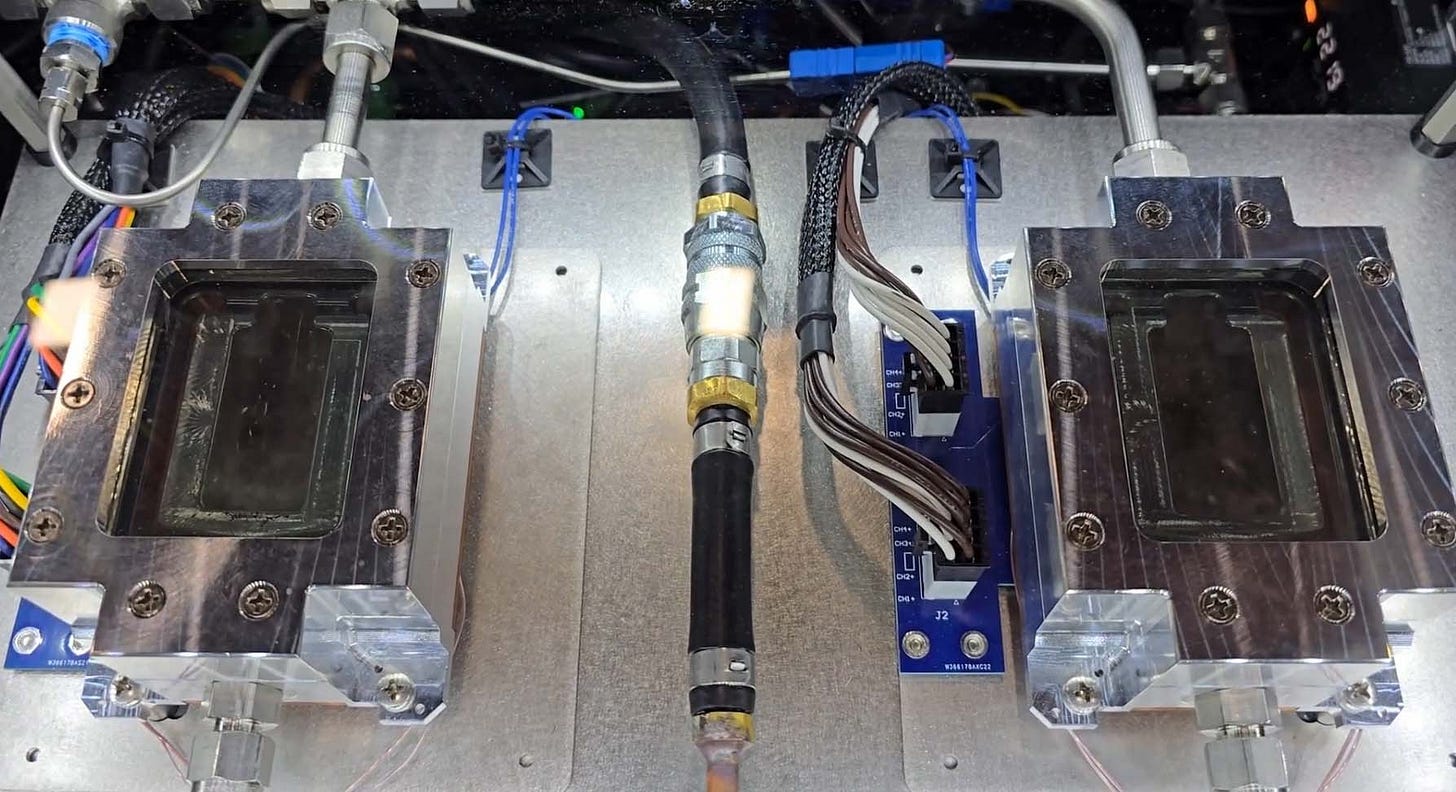Johnson Controls Invests in a Two-Phase Future
Makes Strategic Investment in Liquid Cooling Specialist Accelsius

The current AI boom has boosted investment in data center cooling technology, as the sector prepares for a shift to high-density racks filled with GPUs. That includes a series of investments in liquid cooling companies, like KKR’s 2023 acquisition of CoolIT and Carrier’s investment in ZutaCore earlier this year.
That trend continues with today’s news that smart buildings specialist Johnson Controls has made a multi-million dollar strategic investment in Accelsius, a leader in two-phase, direct-to-chip liquid cooling technology for data centers.
Two-phase solutions use a “phase change” from liquid to vapor to remove heat, enabling more efficient heat extraction with reduced energy consumption. Early two-phase systems often used immersion, where servers were dunked in an enclosure filled with fluid.
Accelsius is among the companies pursuing two-phase cooling delivered inside the server chassis, bringing the cooling closer to the chip. Accelsius CTO Dr. Richard Bonner gave us a demonstration earlier this year at Data Center World:
Johnson Controls has a long history in the data center business with its York line of chillers, but has been sharpening its focus on the sector.
“With the sharp growth in AI, cooling innovation has become a front-line imperative to meet the increasing demands of high-density data centers,” said Austin Domenici, vice president and general manager, Johnson Controls Global Data Center Solutions. “Leveraging our leading capabilities, our mission is to drive the industry forward to unlock new levels of energy efficiency across the cooling chain.”
As part of that push, Johnson Controls just launched a new line of coolant distribution units (CDUs), Domenici and colleague Mihir Nandkeolyar (Director, Thermal Technology Strategy) recently gave me a closer look at the new CDU and the company’s “chip to chiller” approach to data center thermal management.
At the moment the prevailing deployment model is direct-to-chip liquid cooling, often using a cold plate. Data center cooling specialists expect the use of two-phase technologies to increase as rack densities continue to rise.
I’ll be writing a lot more about liquid cooling as we see more deployments of AI hardware, including “AI Factories” optimized around next-generation GPUs. That also includes new technology, like Microsoft’s foray into microfluidics for on-chip liquid cooling.
Microsoft Brings Liquid Cooling Onto the Chip
Microsoft says it has successfully developed an in-chip microfluidic cooling system for servers, a proof of concept for a technology that could support significantly higher densities in the company’s data cen…
Many more cooling advances are on the horizon …


